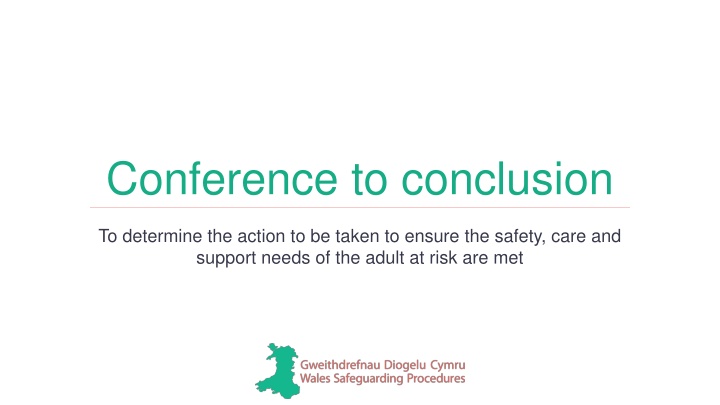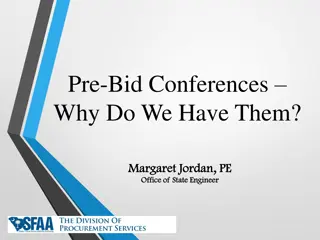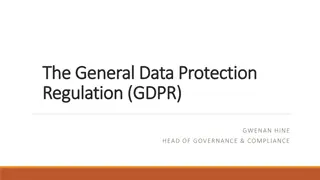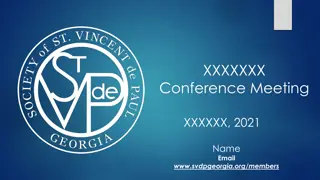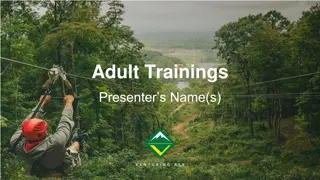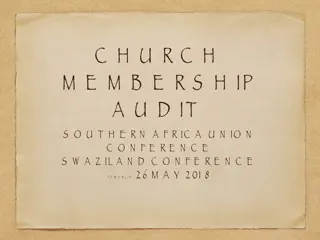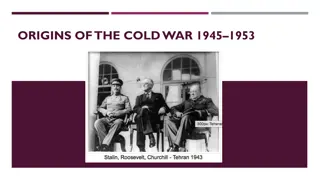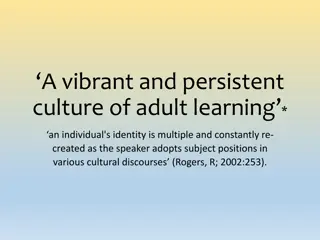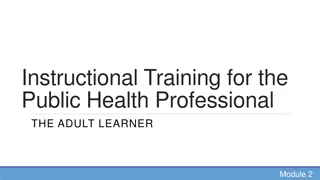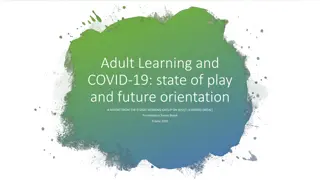Ensuring Safety and Support Through Adult Protection Conferences
Determining actions to meet the safety and support needs of adults at risk involves a process starting from initial enquiries to adult protection conferences. Advocacy services play a crucial role in ensuring individuals can access their rights. Adult protection conferences aim to assess risks, develop protection plans, and consider further actions if needed, with specific roles and responsibilities outlined for effective safeguarding.
Uploaded on Sep 11, 2024 | 1 Views
Download Presentation

Please find below an Image/Link to download the presentation.
The content on the website is provided AS IS for your information and personal use only. It may not be sold, licensed, or shared on other websites without obtaining consent from the author.If you encounter any issues during the download, it is possible that the publisher has removed the file from their server.
You are allowed to download the files provided on this website for personal or commercial use, subject to the condition that they are used lawfully. All files are the property of their respective owners.
The content on the website is provided AS IS for your information and personal use only. It may not be sold, licensed, or shared on other websites without obtaining consent from the author.
E N D
Presentation Transcript
Conference to conclusion To determine the action to be taken to ensure the safety, care and support needs of the adult at risk are met
Report received by social services Initial enquiries Section 126 enquiries Make report to social services Strategy discussion / meeting Discuss with line manager or DSP Adult protection conference Safeguarding concern
Advocacy Section 181(2) of the Act defines advocacy services as: services which provide assistance (by way of representation or otherwise) to persons for purposes relating to their care and support. The Act is based on the rights of the individual. Denying someone access to advocacy denies them many other opportunities to enact their rights, for example, the right to live safe from abuse Adults who have communication needs and children have the right to an advocate when they are involved in safeguarding processes Can be an informal advocate (appropriate friend or family member) or Independent Professional Advocate commissioned by the local authority
Adult protection conference A multi-agency meeting, which includes the individual adult at risk, their advocate and relevant others, as appropriate
Adult protection conference Includes individual adult at risk, their advocate, relevant others Aims share/discuss s126 enquiries outcome and any investigations provide feedback and evaluation of all evidence assess on-going risk of abuse and/or neglect produce/revise a care and support protection plan identify and agree any further protection actions required consider actions to be taken against the perpetrator consider necessary regulatory, legal or statutory action establish whether the adult at risk is satisfied with the outcome of the investigation
Adult protection conference Roles and responsibilities Arranges and chairs strategy meetings and adult protection conferences Monitors and reviews progress of the care and support protection plan Determines whether outcomes have been achieved Determines whether adult safeguarding process can be terminated Lead co-ordinator for social services (or delegated lead)
Adult protection conference Roles and responsibilities Actively engages and works in partnership with the adult at risk Takes the multi-agency lead in preparing, completing, reviewing, delivering and revising the plan Co-ordinates the completion of assessments and progress reviews Completes case records of assessments and plan progress Preparing reports for review Lead co-ordinator for social services (or delegated lead) Lead practitioner
Adult protection conference Roles and responsibilities Normally the lead coordinator for social services Can be delegated to another agency that has more appropriate professional expertise or experience The chair of the conference should be satisfied that sufficient information is available in order for the conference to make an informed judgement about the continuing risk to the adult at risk Lead co-ordinator for social services (or delegated lead) Lead practitioner Chair
Adult protection conference Roles and responsibilities Objectively consider/analyse: all concerns / information from Section 126 enquiries / any investigations the wishes and desired outcomes of the adult at risk any additional assessments required and/or completed any previous involvement with services Lead co-ordinator for social services (or delegated lead) Lead practitioner Chair Practitioners
Adult protection conference The process Frequency A number of conferences can be held No agreed timescales, but they must add value to the process and allow the individual to be engaged in the process Should be held as soon as possible after the conclusion of the investigation
Adult protection conference The process Frequency Agency reports Each agency attending provides a written report summarising: basic information about the adult at risk chronology of agency involvement in current incident/cause for concern and past concerns frequency/nature of contact with adult at risk assessment of current issues, protective and risk factors knowledge of adult at risk s desired outcomes, wishes and feelings, values and beliefs
Adult protection conference The process Frequency Agency reports Sharing reports Agency reports should be given to the chair two working days in advance of the conference Reports should be shared with the adult at risk prior to the conference to enable them to: confirm they agree with the content be prepared for what is going to be shared with other agencies and at conference
Adult protection conference The process 1. Setting the scene Frequency Agency reports Sharing reports Agenda 2. Information-sharing from reports received including 3. Assessing and making sense of the information to establish any further information required 4. Decision-making 5. Outcomes
Adult protection conference The process Frequency Agency reports Sharing reports Agenda Records Should detail and evidence the discussion and conclusion of the conference Should be sent to: the adult at risk where appropriate all attendees and invitees to the meeting all those contributing to the care and support protection plan contract/commissioning teams as appropriate relevant regulatory bodies, as appropriate
Adult protection conference Care and support protection plan The care and support protection plan seeks to remove or reduce the risk of abuse or neglect. It may cover a range of actions and interventions designed to: protect the adult at risk safe from abuse and neglect support carers to continue providing care address risky situations
Adult protection conference Care and support protection plan Person-centred and strengths-based Identifies how the adult will be protected Identifies what their lived experience should be like when plan is no longer required Specifies who is involved in delivering the plan Outlines roles and responsibilities for achieving the person-centred outcomes Provides timescales for achieving actions/outcomes
Adult practice reviews Adult practice reviews have identified concerns regarding adult care and support protection plans, and highlighted the importance for practitioners to make sure that: it is clear at the earliest possible stage exactly what the process is seeking to achieve and that progress against this is monitored there is an understanding of the difference between the activity (output) associated with the process and the outcome itself serious attention is given to the outcomes desired by the adult at risk, or if they do not have the mental capacity to make this decision, what is in their best interests
Adult practice reviews Adult practice reviews have identified concerns regarding adult care and support protection plans, and highlighted the importance for practitioners to make sure that: outcome measures and markers of progress are framed in terms of improvements expected to the daily lived experience of the adult at risk that indicates they are safe from abuse and neglect the adult at risk and the family understand fully the reason for the plan, what is expected of them, and what should be achieved the adult at risk and their family s strengths are recognised and utilised when developing the plan
Adult protection conference Care and support protection plan Monitor and review
Adult protection conference Care and support protection plan Monitor and review
Monitor and review The care and support protection plan should be reviewed by the strategy group at least every six weeks to: ensure the adult is safe from abuse and neglect / care and support needs are met ensure that the strategy group has completed the actions detailed in the plan decide whether a plan continues to be required Additional adult protection conferences may also be held during the process to ensure that the adult at risk is involved in the process
Monitor and review Each strategy meeting, adult protection conference or specific review meeting should ask: What evidence is there that the care and support protection plan is no longer required because the adult is safe from harm? or What evidence is there that the care and support protection plan should continue and/or be revised to protect an adult at risk from abuse and neglect?
Monitor and review Conclusion The decision to close the process should be based on evidence that the adult is no longer at risk of abuse or neglect, or the risks have reduced and can be managed adequately and appropriately by a single agency process Wherever possible, the adult at risk should be involved in the conclusion of the safeguarding process
